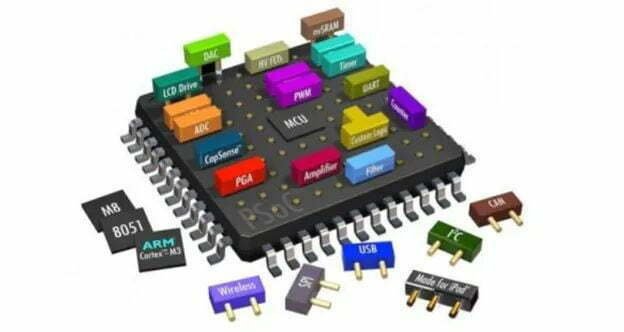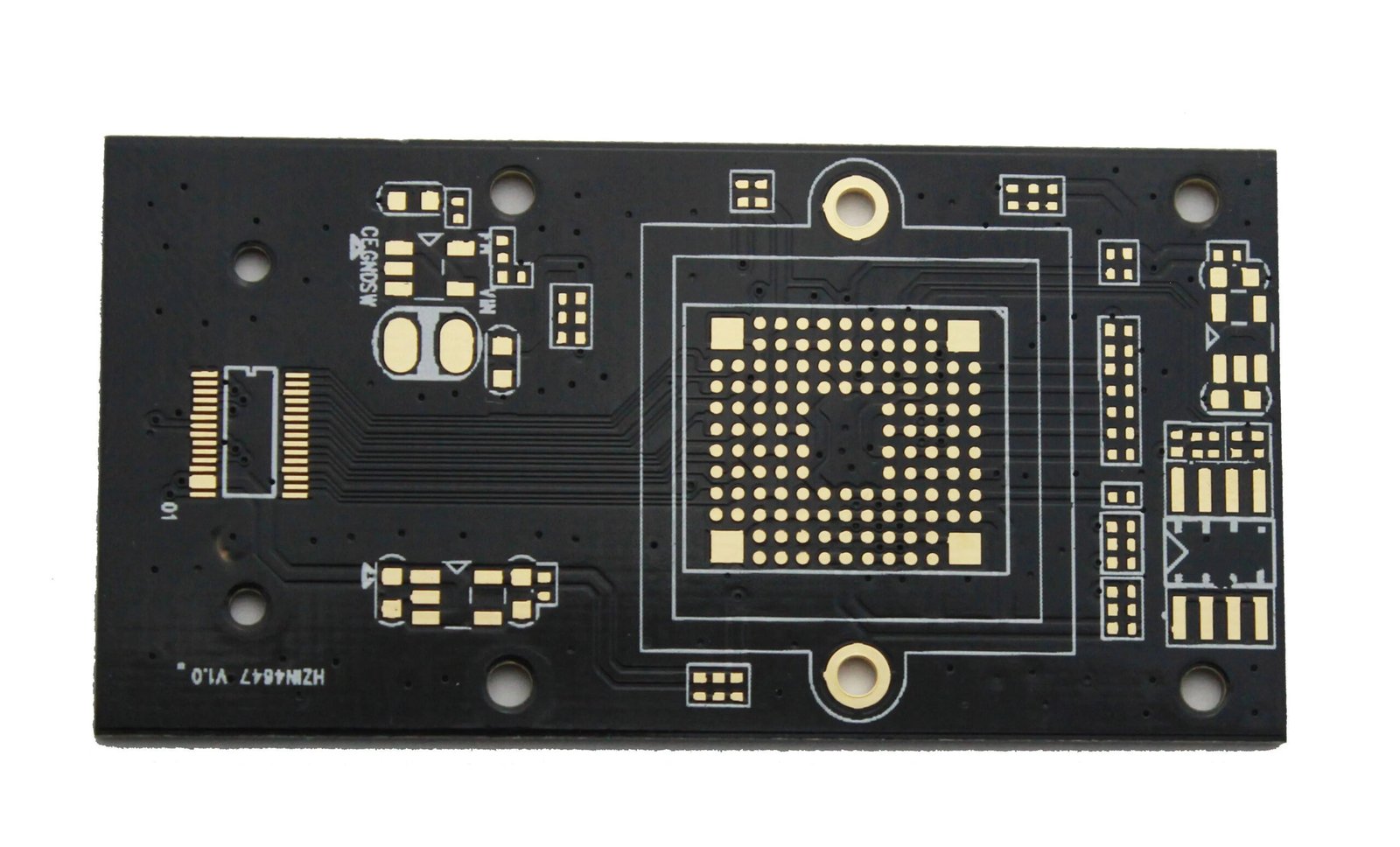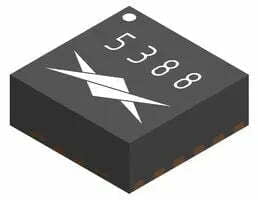The world of technology is constantly evolving and changing. With the advent of new and improved technology, the way we think about and utilize digital systems is also changing. One such technology is system-on-a-chip (SoC) technology. SoC technology is a type of integrated circuit (IC) that combines multiple components, such as processors, memory, and input/output interfaces, onto a single chip. This technology has become increasingly popular in recent years due to its many advantages, such as lower cost, better performance, and smaller size. In this article, we will explore the wonders of SoC technology, including its advantages and disadvantages, designs, controllers, architectures, and more. We will also discuss careers related to SoC technology and development kits for SoC design.
What is System-on-a-Chip (SoC) Technology?
System-on-a-chip (SoC) technology is an integrated circuit (IC) that combines multiple components, such as processors, memory, and input/output interfaces, onto a single chip. This type of technology is becoming increasingly popular in the world of technology due to its many advantages, such as lower cost, better performance, and smaller size. SoC technology also allows for faster and more efficient development of products, as it eliminates the need for multiple separate components.
SoC Architectures
System-on-a-chip (SoC) architectures are the frameworks that are used to design and build SoC systems. SoC architectures typically include components such as processors, memory, and input/output interfaces, as well as the connections between these components. Additionally, SoC architectures also include the software that is used to control the components on the chip, as well as the power management systems that are used to manage the power of the components. Below are the common modules on a SOC:
| Modules | Description |
|---|---|
| Central Processing Unit (CPU) | the “brain” of the SoC, running most of the code for Android, iOS and applications. |
| Graphic Processing Unit (GPU) | handles tasks related to graphics such as user interfaces and 2D/3D games. |
| Image Processing Unit (ISP) | converts camera data into images and video and performs advanced image processing using AI. |
| Digital Signal Processor (DSP) | processes more complex mathematical functions than the CPU, including decompressing music files and analyzing sensor data. |
| Baseband Processing Unit (BBU) | used for network coverage. |
| Memory (ROM/RAM) | stores programs and data information, divided into main and auxiliary memory. |
| Neural Processing Unit (NPU) | for high-end smartphones, accelerates AI tasks such as speech recognition and camera processing. |
SoC architectures are typically designed to be flexible and modular, allowing designers to customize them for specific applications. Additionally, SoC architectures are also designed to be power-efficient, as they must manage the power of the components on the chip. This is why SoC architectures are becoming increasingly popular in the world of technology, as they can provide greater control and efficiency than traditional architectures.
Advantages of SoC Technology
Cost-effectiveness
SoC technology is gaining popularity due to its cost-effectiveness. By integrating multiple components onto one chip, production costs are reduced by reducing the number of components needed and the assembly time. Additionally, the smaller size of SoC technology requires less space, further reducing production costs.
Enhances performance
SoC technology also enhances performance, as it reduces the amount of circuitry needed and increases the speed of the product. This results in more reliable and efficient products. Furthermore, SoC technology streamlines the development process by eliminating the need for separate components.
Smaller size
SoC technology also offers a compact size, allowing for more compact designs in products like mobile phones and laptops. The smaller size, along with the reduced amount of circuitry, results in faster development cycles and more efficient use of space.
Disadvantages of SoC Technology
The drawbacks of SoC technology can be summarized as follows:
- Difficult to debug and troubleshoot, making it challenging to identify and resolve issues.
- Inefficient to upgrade and maintain, limiting product longevity.
- Complex to design, requiring more expertise and leading to higher development costs.
- Shorter lifespan compared to traditional digital systems, due to the integrated components and increased vulnerability to environmental factors.
How system on chip works?
Let’s think of an SoC as a small, all-in-one computer system. When you turn on an electronic device that uses an SoC, here’s what happens:
The CPU, or central processing unit, wakes up and gets to work. Just like the brain of a computer, the CPU is responsible for executing instructions and performing computations.
The memory chips, such as RAM and ROM, kick in to store data and program code. This way, the CPU has quick access to all the information it needs to perform its tasks.
The communication interfaces, such as Ethernet and Wi-Fi, start up and begin transmitting and receiving data. This allows the device to communicate with other devices, such as smartphones or laptops.
The input/output (I/O) interfaces, such as USB and UART, start working to receive signals from external devices, such as sensors, and send signals to displays and storage devices.
The power management components, such as voltage regulators, monitor and control the voltage supplied to the SoC to ensure that it operates within its power and thermal constraints.
All of these components work together seamlessly, just like the different parts of your body work together to perform a task. The SoC takes care of all the tasks in the background, allowing the device to function smoothly and efficiently.
By integrating all of these components onto a single piece of silicon, an SoC greatly simplifies the electronics design process and enables the creation of compact, efficient, and capable devices.
SoC Designs
When it comes to designing a system-on-a-chip (SoC), there are several factors to consider. First, designers must decide which components should be integrated onto the chip and how they will interact with each other. Additionally, designers must also consider the power requirements of the components, as well as the size of the chip. Finally, designers must also consider the cost of the components, as well as the cost of production.
Once the components have been chosen and the design has been finalized, designers must then create the layout of the chip. This involves creating the physical layout of the components, as well as the electrical connections between the components. Additionally, designers must also consider the power and signal integrity of the chip, as well as the routing of the wires. Once the layout has been finalized, the chip can then be manufactured.
Once the chip has been manufactured, designers must then test it to make sure that it is functioning properly. This involves running tests to make sure that the components are working correctly and that the chip is meeting all of its specifications. Once the chip has been tested and approved, it can then be used in products.
Verification process of SOC
The verification process and method for a System-on-a-Chip (SoC) chip can vary depending on the specific chip design and requirements. However, generally, the following steps and methods are commonly used in the SoC verification process:
Requirements gathering and verification planning:
In this stage, the functional requirements for the SoC are gathered and a verification plan is created to ensure that all requirements are tested and validated.
RTL (Register Transfer Level) simulation:
In this stage, the digital logic design of the SoC is simulated using a hardware description language (HDL) such as Verilog or VHDL. The RTL simulation helps to identify any functional issues early in the design process.
Gate-level simulation:
This stage involves simulating the SoC design after it has been synthesized into a gate-level representation. This simulation helps to verify the implementation of the design and identify any design-to-silicon issues.
Emulation:
In this stage, the SoC design is emulated on a hardware emulator, which provides a more accurate representation of the actual silicon. The emulation can be used to validate the design under real-world conditions and to identify any performance or timing issues.
Prototype testing:
Once a physical prototype of the SoC has been manufactured, it can be tested to validate the design and identify any hardware issues.
Formal verification:
This stage involves using formal verification techniques such as model checking, theorem proving, and proof-of-correctness algorithms to mathematically prove that the SoC design meets its functional requirements.
Testbench development:
A testbench is a simulation environment that is used to test the SoC design. In this stage, testbenches are developed to validate the functional and performance requirements of the SoC.
The SoC verification process is an iterative process that may involve multiple iterations of RTL simulation, emulation, and prototype testing until all requirements have been satisfied and any issues have been resolved.
SoC Controllers
Once the system-on-a-chip (SoC) has been designed and manufactured, it must then be controlled. This is where SoC controllers come in. SoC controllers are responsible for managing the components on the chip, as well as controlling the flow of information between the components. Additionally, SoC controllers also manage the power of the components, as well as the flow of data between the components and external devices.
SoC controllers typically use a combination of hardware and software to control the components on the chip. The hardware is responsible for managing the physical connections between the components, while the software is responsible for managing the flow of information between the components. Additionally, the software is also responsible for managing the power of the components, as well as the flow of data between the components and external devices.
SoC controllers are typically designed to be flexible and modular, allowing designers to customize them for specific applications. Additionally, SoC controllers are also designed to be power-efficient, as they must manage the power of the components on the chip. This is why SoC controllers are becoming increasingly popular in the world of technology, as they can provide greater control and efficiency than traditional controllers.
SOC vs SIP
System-on-a-Chip (SoC) and System-in-Package (SiP) are two different approaches to integrating electronic components into a single package. Below are the comparison chart of SOC Vs SIP:
| Feature | SOC (System on a Chip) | SIP (System in Package) |
|---|---|---|
| Definition | An integrated circuit that combines multiple components, such as microprocessors, memory, and interfaces, onto a single chip. | A package that contains multiple integrated circuits, stacked and interconnected to form a complete system. |
| Size | SOCs can be very small in size, sometimes as small as a fingernail. | SIPs can be slightly larger than SOCs, but still relatively compact. |
| Integration | SOCs integrate multiple components into a single chip, reducing the number of components needed in a system and reducing its size. | SIPs integrate multiple components into a single package, but they are not as integrated as SOCs. |
| Cost | SOCs can be more expensive to design and manufacture than SIPs, due to the complexity of integrating multiple components into a single chip. | SIPs can be less expensive to design and manufacture than SOCs, as they are less complex and use fewer components. |
| Performance | SOCs can offer higher performance than SIPs, due to their integrated nature and lower number of components. | SIPs may offer lower performance than SOCs, due to the additional components and interconnections required. |
| Flexibility | SOCs may be less flexible than SIPs, as changing the components or adding new ones can be more difficult. | SIPs can be more flexible than SOCs, as they can be designed to include or exclude specific components as needed. |
In general, SoCs offer a higher level of integration and a more compact solution compared to SiPs, but SiPs offer more flexibility in terms of component selection and integration. The choice between SoC and SiP often depends on the specific requirements of the application, including the size and power constraints of the device, the desired level of integration, and the cost.
SoC vs microcontroller
System-on-a-Chip (SoC) and Microcontroller (MCU) are two different types of integrated circuits that are used in electronic systems. Here are the contrast of them:
| Category | SoC | Microcontroller |
|---|---|---|
| Definition | System-on-a-Chip (SoC) refers to a technology that integrates all components of a computer or other electronic system onto a single chip or integrated circuit. | Microcontroller (MCU) refers to an integrated circuit that is specifically designed for control applications. |
| Components | SoCs typically include the central processing unit (CPU), memory, and other peripherals, as well as digital, analog, and mixed-signal circuits. | Microcontrollers typically include a CPU, memory, and peripherals, with the focus on providing control functions for a specific application. |
| Purpose | SoCs are often used in applications that require a high level of integration and a compact solution, such as smartphones, tablets, and IoT devices. | Microcontrollers are often used in a wide range of applications, including consumer electronics, industrial control systems, and automotive applications. |
In general, SoCs offer a higher level of integration and a more complex solution compared to microcontrollers, but microcontrollers are typically more focused on control functions and are often more cost-effective. The choice between an SoC and a microcontroller often depends on the specific requirements of the application, including the desired level of integration, the cost, and the desired control functions.
SoC vs. CPU
When comparing system-on-a-chip (SoC) technology to a traditional central processing unit (CPU), there are several key differences. The all difference are as below:
| Category | System-on-a-Chip (SoC) | Central Processing Unit (CPU) |
|---|---|---|
| Components | Multiple components such as processors, memory, and input/output interfaces are combined onto a single chip. | Typically consists of a single processor. |
| Design | Designed to be flexible and modular for specific applications. Optimized for power efficiency. | Designed to be general-purpose, not optimized for any specific task. |
| Cost | Typically more cost-effective than CPUs due to the combination of multiple components onto a single chip and reduced space requirements. | Typically more expensive due to its general-purpose design and individual components. |
Careers in SoC Technology
The increasing popularity of system-on-a-chip (SoC) technology has opened up many new career opportunities. One of the most popular career paths is that of a system-on-a-chip (SoC) engineer. SoC engineers are responsible for designing and developing SoC systems, as well as controlling and managing the components on the chip. Additionally, SoC engineers must also be familiar with the components and their interactions with each other, as well as the power and signal integrity of the chip.
Another popular career path is that of a system-on-a-chip (SoC) designer. SoC designers are responsible for creating the layout of the chip, as well as the electrical connections between the components. Additionally, SoC designers must also consider the power and signal integrity of the chip, as well as the routing of the wires. Once the layout has been finalized, the chip can then be manufactured.
Finally, there are also careers in system-on-a-chip (SoC) development kits. SoC development kits are used to create SoC systems, and they typically consist of components such as processors, memory, and input/output interfaces, as well as the software and hardware needed to control the components. SoC development kits are becoming increasingly popular in the world of technology, as they allow manufacturers to quickly and easily develop products using SoC technology.
Conclusion
In conclusion, system-on-a-chip (SoC) technology is an integrated circuit (IC) that combines multiple components, such as processors, memory, and input/output interfaces, onto a single chip. This type of technology is becoming increasingly popular in the world of technology due to its many advantages, such as lower cost, better performance, and smaller size. Additionally, SoC technology also allows for faster and more efficient development of products, as it eliminates the need for multiple separate components.
When it comes to designing an SoC system, there are several factors to consider, such as the components that should be integrated into the chip, the power requirements of the components, and the cost of production. Additionally, SoC systems must also be controlled, which is where SoC controllers come in. Finally, there are also careers related to SoC technology, such as SoC engineers and SoC designers.
System-on-a-chip (SoC) technology is a powerful and cost-effective way to create digital systems, and it is becoming increasingly popular in the world of technology. If you are interested in learning more about SoC technology, there are many resources available, such as SoC development kits and online courses. By exploring the wonders of SoC technology, you can open up many new opportunities in the world of technology.





